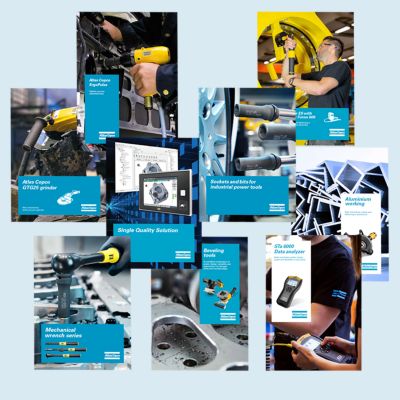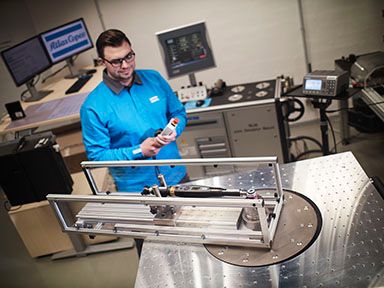It’s an effective method of detecting and avoiding quality issues such as floating or misaligned screws. There’s a downside, however: this tightening strategy works only if all station components have consistent dimensional and mechanical properties.
For those who manufacture parts or products in low torque applications, mechanical and dimensional consistency isn’t always possible. The added challenge of trying to control the properties of smaller components in low-torque manufacturing segments complicates things further. Atlas Copco has solutions for this specific issue, and they come in the form of two advanced tightening strategies: Seating Control Strategy and Torque Seating Monitoring.

But first… let’s talk clamping torque
While target torque is the most common factor used to control the quality of a tightening process, clamping torque, as we’ve discovered, is the most critical factor. If we split the fastening process into three phases (engagement, rundown, and tightening), the clamping torque is defined as the amount of torque installed in the joint after the seating point. In other words, clamping torque is the difference between target torque and seating torque.

As torque rotates a screw, tension is created, generating clamping force between the components. The best available reference of the clamping force is the clamping torque. This is why clamping torque should be monitored and controlled in all tightening processes. For both tightening strategies described below, our MicroTorque Focus 6000 (MTF6000) is used in conjunction with our ToolsTalk MT software.
Advanced tightening strategy #1: Seating Control Strategy
In this smart torque tightening strategy, the MTF6000 controller controls clamping torque and monitors the final torque performed by the automatic screwdriver. During the fastening process, MTF6000 detects the seating point and adds the pre-defined clamping torque. Upon completion, the controller verifies that the clamping torque is within the defined limits. If it isn’t, the tightening is signaled NOK, indicating that the tightening needs to be completed again using your in lb screwdriver. Seating Control Strategy controls the clamping torque, which is your key to understanding whether or not tightening was completed according to the programmed settings.
In addition, the MTF6000 graphically displays your tightening data, ensuring detection and reporting of process abnormalities, along with accurate and detailed real-time information.

Advanced tightening strategy #2: Torque Seating Monitoring
For this tightening strategy, the MTF6000 controls the final torque and monitors the clamping torque performed by the automatic screwdriver. The final torque is set, and when the seating point is detected, the clamping torque is monitored to ensure that your in lb screwdriver stays within the pre-defined limits. If the clamping torque is outside limits, the tightening is aborted, and all tightenings with insufficient clamping torque are detected.
At completion, clamping torque is used to validate that the tightening was successful, safeguarding your facility from scrap and rework costs. Throughout both advanced tightening strategy processes, angle and torque are measured, error-proofing every step of the way.
Smart torque tightening strategies for you
It’s true; the industry standard of tightening strategies in which torque and angle are controlled and monitored is effective as long as the friction of the joint remains consistent. What about those working in low torque processes, where even the slightest variation in friction has tremendous effects? Those in the electronics, medical equipment, or avionics segments? Atlas Copco has you covered. Our Seating Control Strategy and Torque Seating Monitoring strategies are your answers to remaining consistent while performing tightenings with automatic screwdrivers!
To learn more about our innovative product offerings for MicroTorque in lb screwdriver assembly processes, contact us and schedule a demo today!






